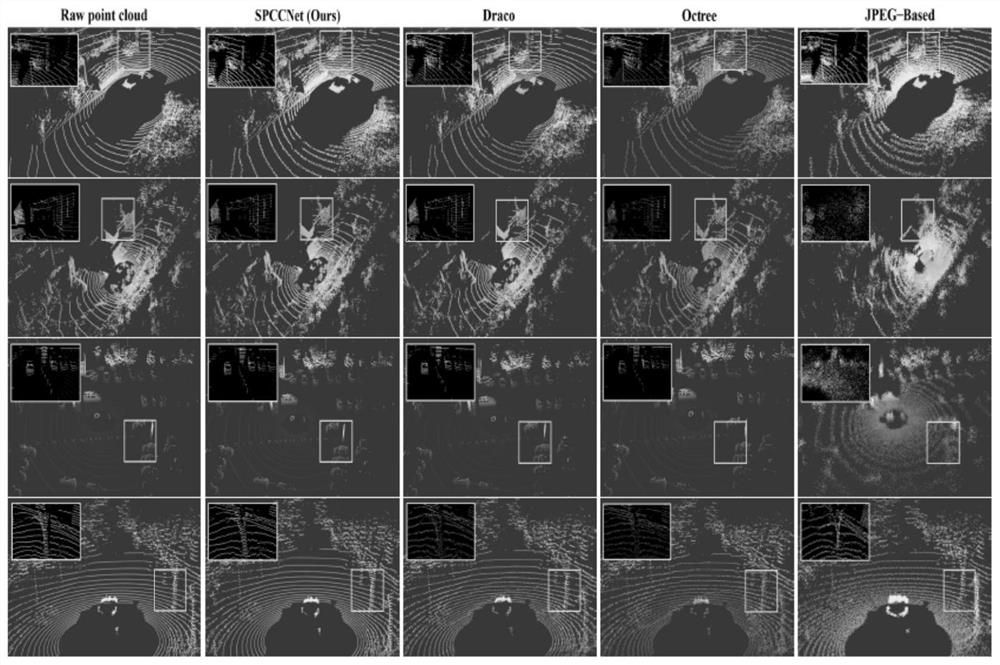End-to-end point cloud data compression method based on three-dimensional laser radar sensor
A radar sensor, three-dimensional laser technology, applied in neural learning methods, instruments, electromagnetic wave re-radiation, etc., can solve the problem of insufficient network transmission capacity and multi-sensor data, and achieve faster convergence speed, high precision, and high-efficiency fitting performance Effect
- Summary
- Abstract
- Description
- Claims
- Application Information
AI Technical Summary
Problems solved by technology
Method used
Image
Examples
Embodiment
[0053] First, our method is evaluated by three evaluation metrics, namely Mean Squared Error (RMSE), Structural Similarity, (SSIM) and Peak Signal-to-Noise Ratio. RMSE can reflect the numerical deviation between the compressed point cloud and the original point cloud. SSIM is used to describe the structural similarity between the compressed point cloud and the original point cloud. PSNR can be used to indicate the quality of compressed point clouds. We use more than 5000 frames of point cloud data from different dataset validation sets for evaluation experiments, including four representative scenes of campus, city, highway and village. See Table 1 for details.
[0054] Table 1: Data information in multiple scenarios
[0055]
[0056] This example compares the point cloud compression results of Google's Draco, Octree, JPEG-based methods and our method. For each method, we evaluate different compression levels in four cases and choose the lowest bits per point (Bpp) with...
PUM
 Login to View More
Login to View More Abstract
Description
Claims
Application Information
 Login to View More
Login to View More - R&D
- Intellectual Property
- Life Sciences
- Materials
- Tech Scout
- Unparalleled Data Quality
- Higher Quality Content
- 60% Fewer Hallucinations
Browse by: Latest US Patents, China's latest patents, Technical Efficacy Thesaurus, Application Domain, Technology Topic, Popular Technical Reports.
© 2025 PatSnap. All rights reserved.Legal|Privacy policy|Modern Slavery Act Transparency Statement|Sitemap|About US| Contact US: help@patsnap.com



